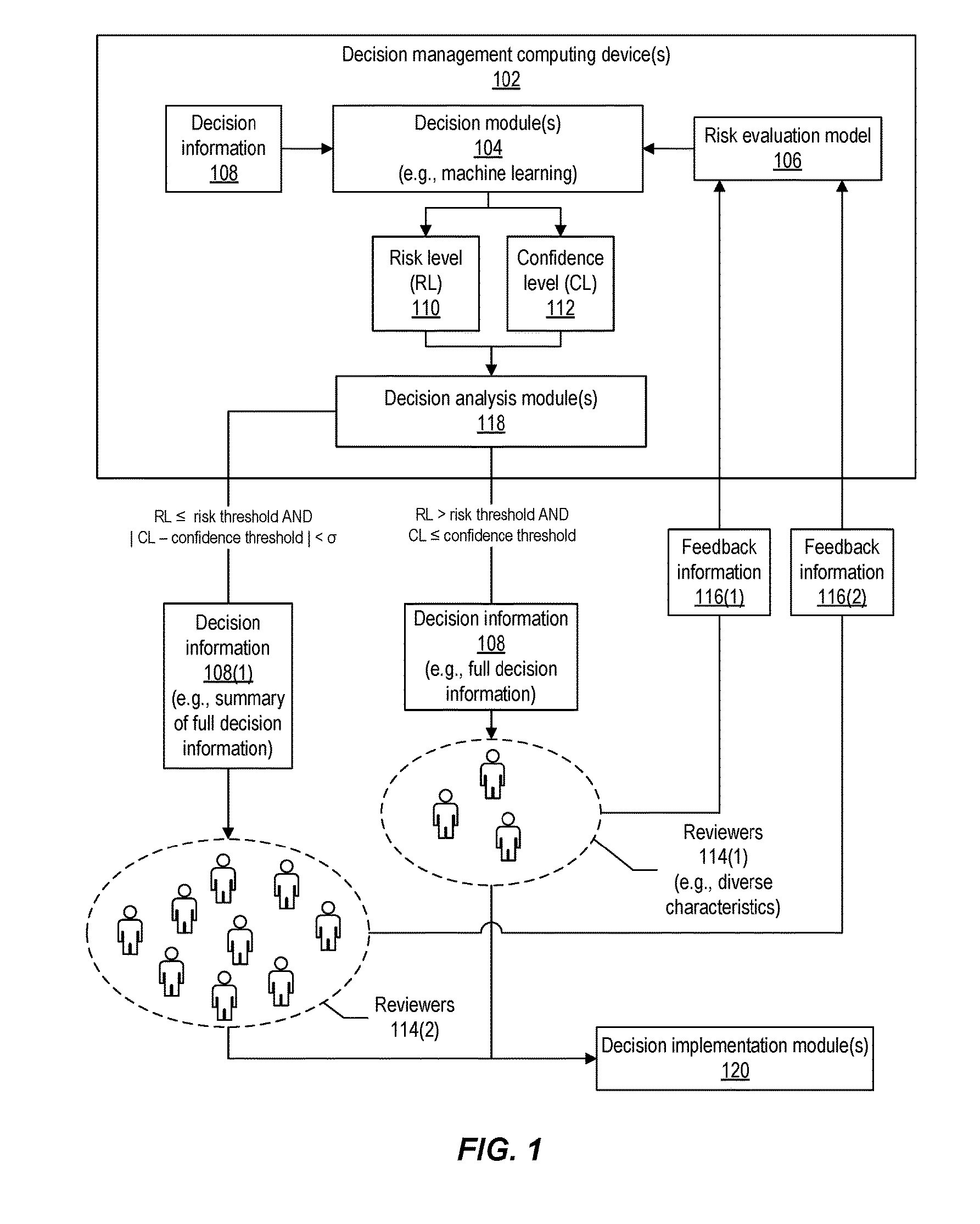U.S. Patent No. 10,346,782 B2 (‘782), issued on July 9, 2019, for “Adaptive Augmented Decision Engine.” The inventor is Steven C. Tiell of San Francisco, California. The applicant and assignee is Accenture Global Solutions Ltd. of Dublin, Ireland. The claims are directed to the computer-implemented method of utilizing artificial intelligence for adaptive decision-making, or reduced to its basic form, problem solving.
Figure 1 illustrates the claimed invention:

The interesting aspect about the ‘782 patent is it was subject of a rejection under 35 U.S.C. §101 during prosecution for having claims directed to a computer-implemented method. The original claim 1 read, and was amended during prosecution, as:
- A computer-implemented method performed by at least one processor, the method comprising:
providing, by the computing device, decision information to an artificial intelligence (AI) engine executing on the at least one computing device, and receiving a decision that is generated by the AI engine based on the decision information;
providing, by the AI engine executing on the at least one computing device, the decision information and the decision as input to a risk evaluation model stored on the at least one computing device and receiving from the risk evaluation model: i) a risk level that is calculated by the risk evaluation model and that measures a risk associated with the decision, and ii) a confidence level that is calculated by the risk evaluation model and that measures a confidence in the calculated risk level;
providing, by the at least one processor, based on a risk evaluation model, a risk level associated with a decision provided from an artificial intelligence (AI) engine, the risk evaluation model further providing a confidence level for the risk level;
responsive to determining, by a decision analysis module executing on the at least one computing device, that the risk level is at least greater than a risk threshold and the confidence level is less than a confidence threshold,
communicating, by the decision analysis module at least one processor, the decision information [[for]] and the decision to be reviewed by a first set of reviewers including multiple reviewers characterized by at least two different expertise key words;
receiving, by the AI engine executing on the at least one computing device at least one processor, recommendations from the first set of reviewers regarding the decision information; and
responsive to determining that the recommendations indicate a consensus among the first set of reviewers, modifying, by the AI engine executing on the at least one computing device at least one processor, the risk evaluation model based on first feedback information including the recommendations from the first set of reviewers, the risk level, and the confidence level; and
responsive to determining, by the decision analysis module executing on the least one computing device, that the risk level is less than the risk threshold and the confidence level is within a predetermined range of the confidence threshold:
communicating, by the decision analysis module, a summary of the decision information for the decision to a second set of reviewers; and
receiving votes from the second set of reviewers recommending a full review and, in response, modifying, by the AI engine, the risk evaluation model based on second feedback information including the risk level, the confidence level, and the votes recommending the full review.
The amendments were also necessitated by a rejection under 35 U.S.C. §112(b), for indefiniteness as to the term “risk level is at least a risk threshold” which created an ambiguity on the scope of Claim 1.
Patent-eligibility has become a major issue in U.S. patent law as a result of the U.S. Supreme Court cases in Alice Corp. v. CLS Bank Int’l,[1] dealing with abstraction in computer-implemented claims, Mayo Collaborative Servs. v. Prometheus Labs., Inc.,[2] dealing with abstraction in medical diagnostics claims, and Ass’n for Molecular Pathology v. Myriad Genetics, Inc.,[3] dealing with gene patenting. The trio of cases are relevant to patent-eligibility under §101, which has been the subject of intense debate and continuous fluctuations in case law before the Fed Circuit. The result has created an unpredictable and difficult prosecution for these types of patent applications. The ‘782 patent, however, successfully navigated the prosecution §101 minefield, so the takeaway is that it is possible to have a patent issued but may be the by-product of extensive claim amendments during prosecution.
[1] 572 U.S. 208 (2014).
[2] 566 U.S. 66 (2012).
[3] 569 U.S. 576 (2013).

2 thoughts on “U.S. Patent No. 10,346,782 B2”
Comments are closed.